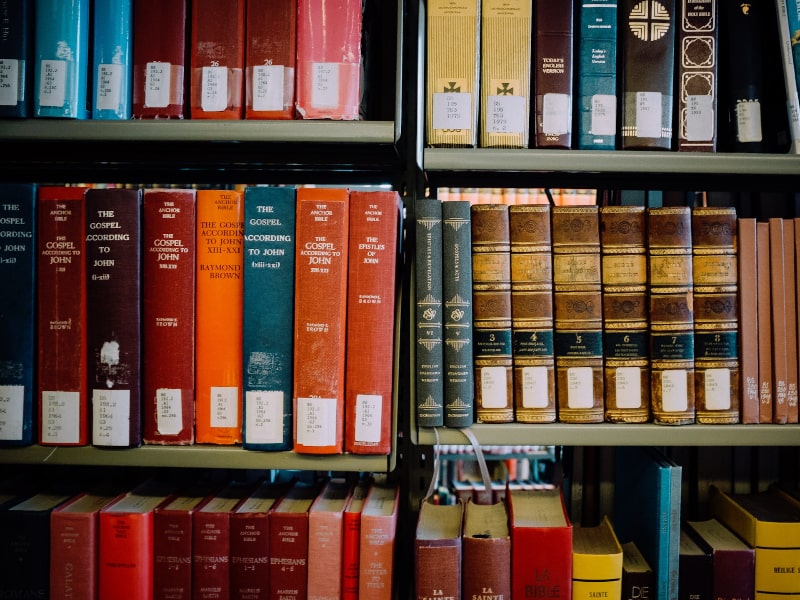Egyptian literature: what it is, literary history, development, characteristics and more
Contents
What is Egyptian literature?
Egyptian literature is one of the main manifestations of the literary world, since it is known as one of the first in humanity. The main characteristic of Egyptian literature lies in the use of symbols and figures, known today as hieroglyphs. These figures would allow the inhabitants to identify elements and visually maintain different elements that were part of their culture and daily activities.
It is considered that the Egyptian literature would be the result of the popular voice of the first known civilizations, reason why it comprises, at the same time, the first known manifestations and from which many others will begin to work with the passage of time.
History and origin of literature in Egypt
One of the most important axes of Egyptian literature that largely allowed the development of culture was the ability and ingenuity that work in order to obtain answers in relation to the existence of human life and everything around them, being one of the most important bases of thought. From these concerns the imagination of the inhabitants begins to work in the resolution of the unknowns to give rise to explanations.
Proto-writing, which is the term used to refer to the first writing systems born in Egypt, consisting of a series of symbols and figures, appeared for the first time before the dynasties, approximately at the end of the 4th millennium BC. These symbols were drawn on stones, walls, vases and a series of other facades that allowed them to announce their customs and practices. In this way, records were created with the objective of gathering information about their activities.
It is towards the XXI century B.C., that with the appearance and use of papyrus, the themes of the literary manifestation begin to have another series of variants, among which funeral texts are included, as well as epistles, poems and indications of autobiographies. Added to this is the rise of the writing profession, which considerably increases the production of texts produced at the time. However, a large part of the population was not literate, so that they did not know the meaning of the papyrus, the writing on the walls and the symbols, so that the writing will become a fundamental weapon for the rulers and the elite who will take great advantage of it.
As time goes by, more and more people, from different social classes, can have access to writing and reading figures and symbols, which facilitates the expansion of the content, especially of the laws. In addition, to avoid the loss of knowledge of the first manifestations, many writers begin to transcribe the old writings to the new ones. In this way, information, knowledge and another series of contents began to be compiled and arranged in the well-known Library of Alexandria, built at the beginning of the 3rd century B.C., which stored a large amount of papyrus with information on the advances and knowledge of the time.

Development of literature in Egypt
Egyptian literature is one of the oldest in the world, which is why its first manifestations took place some time before the invention of writing as we know it today. In Egypt literary expressions will be made from hieroglyphs, a set of symbols, signs and figures that allow these inhabitants to transcribe their customs and culture to walls, stones and facades that occupied their settlements.
Later, when the use of other means for writing hieroglyphs began, literature began to evolve, so that the writing processes would allow the development of what would be the first subgenres of literature, which would later be classified. These are: poems, epistles, funeral texts, autobiographies, letters and the first advances in the narrative genre. In addition to this, the use of recurrent stylistic resources such as the invocation of deities, parallelism, repetition of ideas and grammatical structures, and the frequency of mythological themes will be seen.
During this period, prophetic texts were also developed, guided by the first explanations of the inhabitants regarding the origin of the world. They also include the production of discursive texts, laments and in some cases, apocalyptic literature.
Thus, Egypt is the birthplace of literature as we know it today, being the first to develop writing and will become a fundamental axis for the development of literature in the rest of the world.
Egyptian letters
Letters, which would later be classified within the epistolary subgenre, emerged with the use of writing on papyrus, which sealed with clay would be sent to different areas, this in the case of the longest letters, while letters of smaller dimensions were also developed and sent to nearby inhabitants.
Biographies and autobiographies
It is believed that the first biographies and autobiographies date back to Egypt, especially in the third millennium BC. These first texts were written with the purpose of praising the continuity of the figures that were part of the dynastic power. They were written in the first person and their content, as it is today, was intended to immortalize the life and commemoration of the protagonists.
Decrees and other texts
The content developed, especially biographies and autobiographies have been fundamental documents of study for modern historians, who have analyzed them as a historical reference to extract a great deal of information of the time, its culture and tradition. These texts, added to the lists of kings and chronicles found, will be key to the study of the royal decrees that were issued by the pharaohs in power and in their different instances and dynasties.
Main characteristics of Egyptian literature
Among the most representative features of the literature in this area, we find the following:
Theme: one of the most important aspects of Egyptian literature is the variety of themes that were found in the manifestations. One of the most recurrent themes was mythology, as well as the customs of the inhabitants, the laws and some other guidelines of conduct that they had to follow to become exemplary citizens. Thus, from the laws, later on, they started with the creation of texts.
Importance of mythology: another fundamental aspect of Egyptian literature was the importance given to mythology, since the Egyptian gods became one of the most important themes affecting the lives of the inhabitants in general. That is why issues such as curses when the divine commandments were broken, as well as other consequences, were one of the most developed issues in order to keep the inhabitants under control.
Educational purpose: according to the themes that were developed, years later the need to propose texts for educational purposes was born, which would facilitate the transfer of knowledge to other inhabitants.
Material used: the first thing the Egyptians used for writing were chisels to carve on the stones, although they also used the calamus, a cut reed similar to a paintbrush. For this they used pigments such as ochre, a mineral, and carbon black. Mainly hemp was used for the subsequent writing on papyrus, however the latter, with the passage of time, came to have a high cost.
Funerary processes: this practice will be substantial for the literary development, because from the beliefs and activities, funeral poems begin to be written, which are considered the first texts of religious literature, as well as another series of poems in order to exalt the achievements obtained in life, hymns and songs to the gods, manifestations that remained on the walls of the temples.
Writers: those who dedicated themselves to the activity of writing were known as scribes, a social group in charge of transmitting, canonizing, storing and writing literary texts. However, they were not the only ones who knew the art of writing and reading texts; there was another group of people who, although they were not part of the profession, could also read and had access to texts, often people from the upper social classes.

Among the main authors of Egyptian literature we can identify Dua-Jeti, writer of the 19th Dynasty, Ptahhotep of the pre-dynastic era, as well as other relevant figures among which are Ipuur, Kagemni, Ennana, Naguib Mahfuz, among others. With the passage of time, especially in modern literature, Egypt also develops a fundamental role in the literary work, being Yaqub Sannu one of the pioneers of the Egyptian theater, who inspired by European models completes a selection of representative works. Writers such as Mustafa Lutfi al-Manfalouti and Yuryi Zaydan stood out in the novel.
As for works or texts of Egyptian literature are: “The story of a castaway”, “The story of King Khufu and the magicians”, “The adventures of Sinuhé”, “The story of the eloquent peasant”, “The book of the dead” or also known as “Peri Em Heru”, among others.
